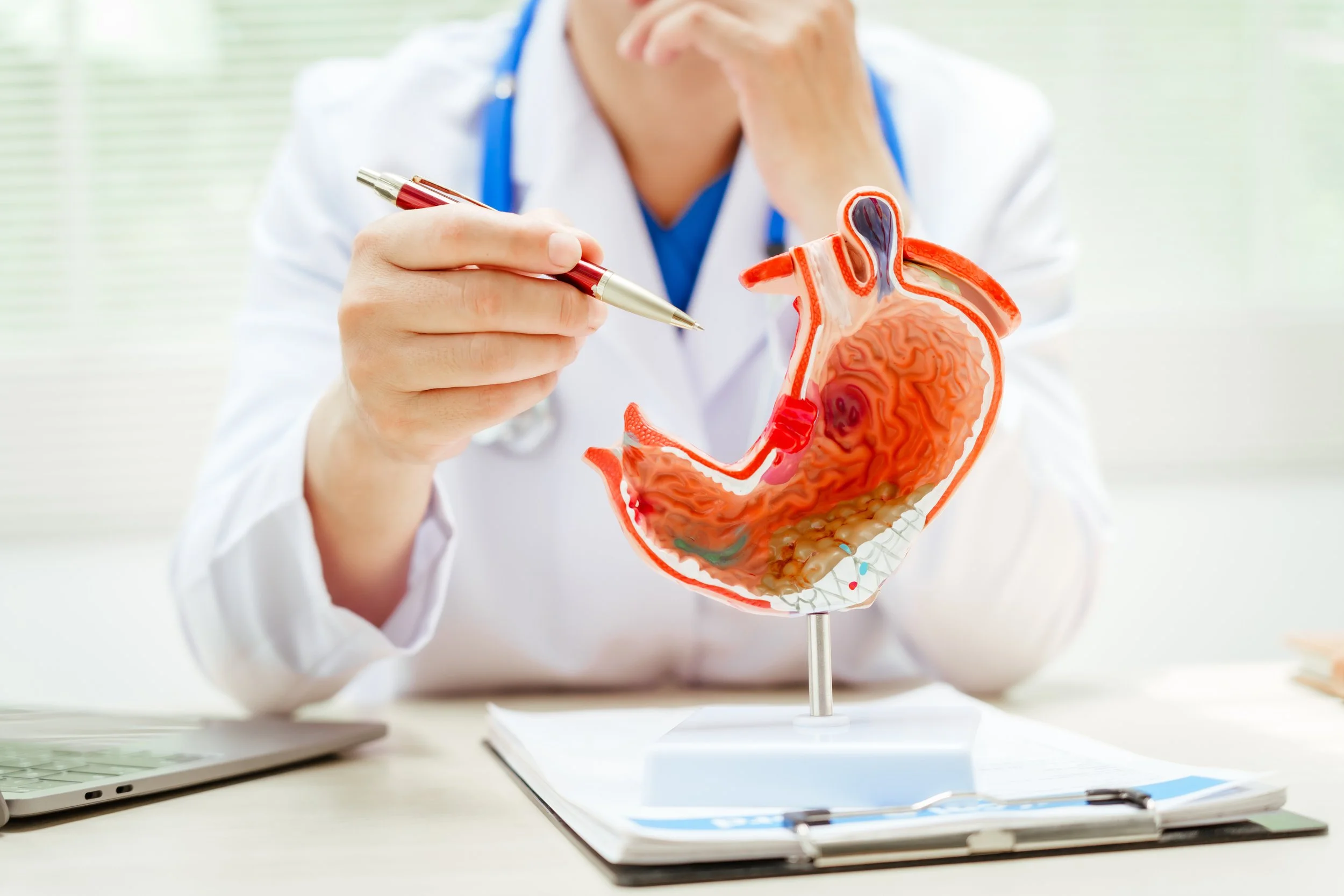A Tale of Digestion:
Starring: Hydrochloric Acid (HCL)
Let me set the scene....you're in your kitchen, with the chopping board in front of you and you're prepping the dinner!
You slice a lemon and that sharp citrus zing hits your nose.
Before you've even taken a single bite, your body is already prepping for the arrival of delicious food.
Welcome to the warm up act:
THE CEPHANIC PHASE!
Taste and smell receptors are firing off, right, left and centre... These are sending messages to your brain to activate the vagus nerve and jump start your stomach into action:
“Heads up down there....FOODS coming.”
Down below, your stomach cranks up the heat: parietal cells start pumping stomach acid (HCL) mixed with a splash of gastrin to boost the signal and really get the juices flowing.
The top valve snaps shut to keep acid where it belongs, and the whole stomach relaxes and stretches to make room for the incoming sustenance.
Serious note: This is why cooking for yourself is so important! Smelling your food as you prepare it is the start of digestion, before you even take a bite!
Welcome to Act Two:
THE FIRST MOUTHFUL!
Now its chomp time. Chewing is your food processor and saliva is the first splash of 'marinade'.
The more you break your food down here, the less heavy lifting your stomach has to do later.
The 'marinade' isn’t just moisture, it’s a magic enzyme mix that starts breaking down carbs (amylase) and even a little fat (lipase).
Serious note: Chew like you mean it - 15–20 chews per mouthful.
Welcome to Act Three:
HCL TAKES CENTRE STAGE!
Your well chewed ball of nutritious goodness now travels down the oesophagus and drops into the cement mixer - YOUR STOMACH!
Here, hydrochloric acid (HCL) is the protagonist and it quickly gets to work:
✅ Protein unravels and pepsin (your protein scissors) switch on.
✅ HCL sanitises what you’ve eaten (fewer unwanted microbes).
✅ The meal becomes just acidic enough to send the “ready!” signal downstream.
Serious note: Eating on the run, answering emails between bites, arguing at the table… and the vagus nerve downregulates and so does your HCL production.
Welcome to Act Four:
HCL BECOMES THE DIRECTOR!
The star of the show - HCL - slides from centre stage to the director’s chair.
Once the HCL saturated, acidic mix (aka chyme), leaves the stomach and hits the small intestine, that acidity is the cue that sets the whole scene in motion.
Secretin (digestive hormone) is summoned to radio the pancreas to cool things down a little...
In comes the bicarbonate plus digestive enzymes to finish the job on the carbs, fats, and proteins.
CCK (Cholecystokinin - another digestive hormone) also gets the memo and pings the gallbladder:
"Emulsion time - bile to the pass"
Out pours bile (your natural washing-up liquid) that breaks fats into tiny droplets so you can actually absorb them.
CCK also nudges the pancreas for extra enzymes and slows the stomach’s pace so service runs smooth.
Welcome to Act Five:
THE CURTAIN CALL!
This tale ends here, with your food being beautifully and precisely broken down into usable nutrients and absorbed in the small intestine — Iron, B12, Zinc, Amino acids, Fatty acids — all the raw materials for energy, hormones, mood, recovery, hair/skin/nails.
But here’s the honest ending…
Every act matters yet HCL is the A lister!
If the performance of HCL is weak and uninspiring, the whole cast underperforms:
Secretin/CCK don’t fully “fire” → enzymes/bile under-deliver.
Fats feel heavy, protein lingers and ferments, you get greasy stools, nausea and reflux.
Over time, B12/iron/zinc drift low → fatigue, brittle nails, hair shedding, slower recovery.
In short: Miss the spark, and the show falls flat. Nail the spark, and everything downstream makes sense.
About the Author
Ben Cooper is a Registered Nutritional Therapist, Functional Medicine Practitioner, and founder of Cooper Coaching and ReCooper8 — online programmes dedicated to gut health, hormonal balance, and cardiovascular wellness.
Drawing on over 15 years of experience, Ben helps clients uncover the root causes of digestive symptoms and rebuild gut health using science-based, holistic strategies.

